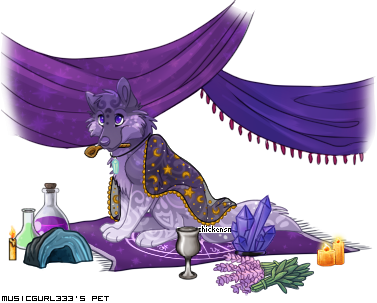 by Palimpsest » Mon Sep 18, 2023 8:37 am
by Palimpsest » Mon Sep 18, 2023 8:37 am
I wrote out a thing just to get my head around it, and then people made some lovely points as I was writing it, so this is less relevant now but I'm leaving it here in case it helps anyone.
How I've always understood the logic behind older pets raising in value was that an older pet was closer to being in the rarity tier above it, so a 2010 uncommon was closer to being rare than it was to being uncommon. So it's always confused me how anyone could value an older common, for instance, more than a new uncommon - or even an older rare more than a new very rare.
What I'm understanding here is that people who do value that more are accounting for the pet being more popular and therefore less likely to be in circulation, and more likely to be (especially with time) "stuck" in non-tradeable collections - and that the result of doing so greatly increases it's value.
Now from my personal experience trading almost exclusively for older commons & under in the past months before the update to fill in my collection, they were marginally harder to find, but not to the point where I would value them at rare - at the most, with a large date gap, it made sense to trade them for one rarity up (or toss in an extra common), and pretty much everyone I traded with seemed to find that fair as well. Mostly, however, I didn't have a problem finding them. However, when it came to even 2015-2017 rares (and uncommons that mostly became rares this update), it was very difficult to find people willing to trade them, and I can see how age visibly increased their value.
Now that higher rarity pets are more clearly defined (or at least those between extremely uncommon to very rare), most of the pets I struggled to find now seem to more accurately reflect their rarity, and I would say that what felt like overpay now seems fair - so I'm much more comfortable trading within rarity even for those older uncommons. It doesn't feel like demand really affects them more than rarity. At the same time, I can see how the higher rarity you go the more demand makes a difference. In my opinion demand does not make a significant difference for, say, very uncommon and below, and doesn't hugely inflate value for extremely uncommon and rare, although it does have an effect.
I voted for the third option because I feel like for me, while I'd use the three year rule for higher rarities (well, personally more 3-5 for me), in my experience it doesn't make as much sense for lower ones. There's always going to be outliers, but that doesn't define the rule. I really don't feel like neither time nor demand can inflate the value of common pets to a significant degree.
I don't actually feel like I should be the one to make that call, but I wanted to write this out because I'm curious how much demand (which I define here as something that increases due to pets being kept in non-tradeable groups) should increase the base value of a category. In my opinion it just doesn't make enough of a difference in lower rarities to make it a base guideline.
(Edit after reading what folks have said while I was writing - it feels like several people are also thinking this).
I did like the discussion that was happening around what exactly a lower rarity is, and the point that someone made earlier about not splitting rare from extremely uncommon, as yeah the update should make it easier to trade up to rare now that there's not so much of a gap. So I'm not exactly sure where that demand starts to matter.






















.png)












